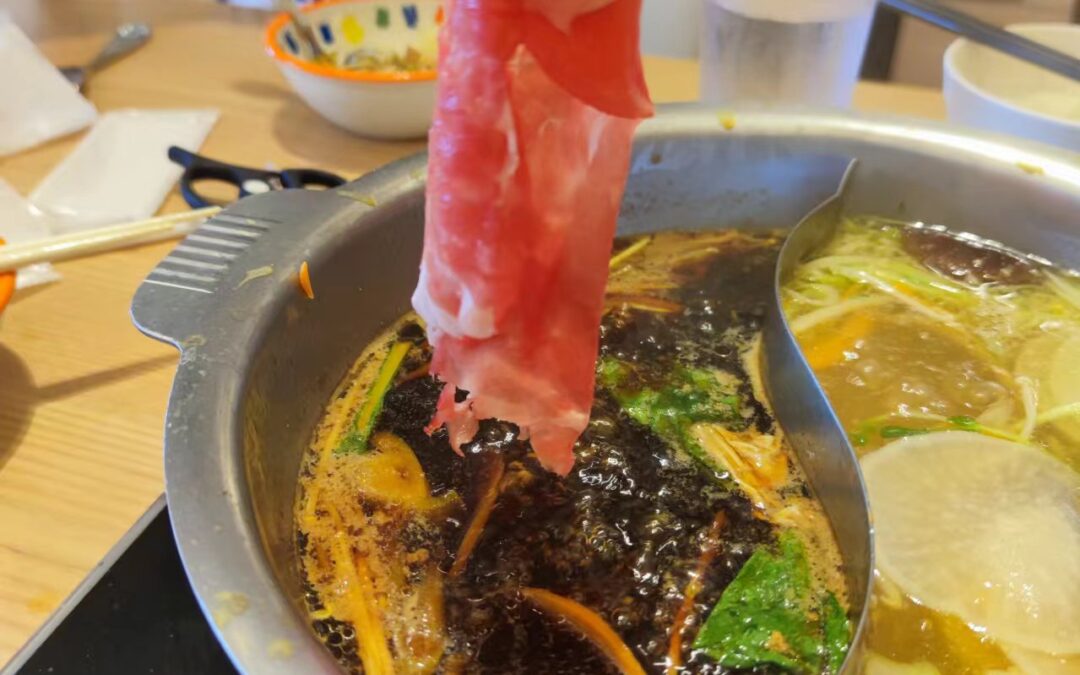During the Chinese national day, I had a week-long holiday along with most Chinese people, and I decided to go to Japan to visit a friend of mine from college. I spent most of the holiday chatting with my friend and her friends, playing with her adorable kids, and eating super delicious Japanese food.
On the last day of my trip, we went to the mall near the airport and ended up at a Shabu Shabu restaurant which is basically Japanese hot pot. Before I came to China, I had no idea what hot pot was, but now it’s one of my favorite meals.
When my Chinese students first tried to describe hot pot, I thought it was ridiculous because they said that you order raw food and then cook it yourself in a pot of boiling soup at your table. I didn’t quite understand the concept of going to a restaurant and cooking your own food. Now, one of the things that I love about going to hot pot restaurants is the relaxed feeling of chatting with friends while we wait for the food to cook and then just eating and eating until we are full—which usually takes a while.
Japanese hot pot is quite similar. Most Shabu Shabu places seem to be buffets, but we ordered a limited amount of meat and then the vegetables, noodles, rice, and curry were all-you-can-eat. My Japanese friend said that it’s called Shabu Shabu because the meat is sliced so thinly that you can pick up the raw meat with your chopsticks, dip it in the soup, swish it back and forth a few times (that’s the shabu shabu sound), and then it’s ready to eat. Since I’m afraid of undercooked meat, I tended to let it cook a bit longer, and it was always delicious.
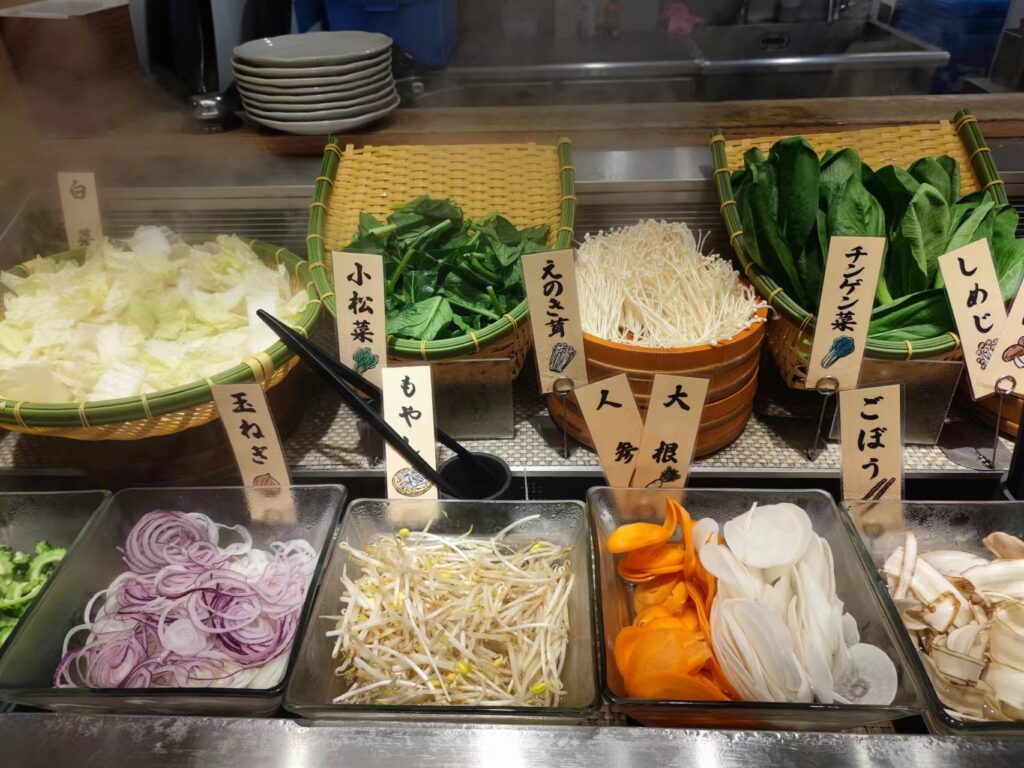

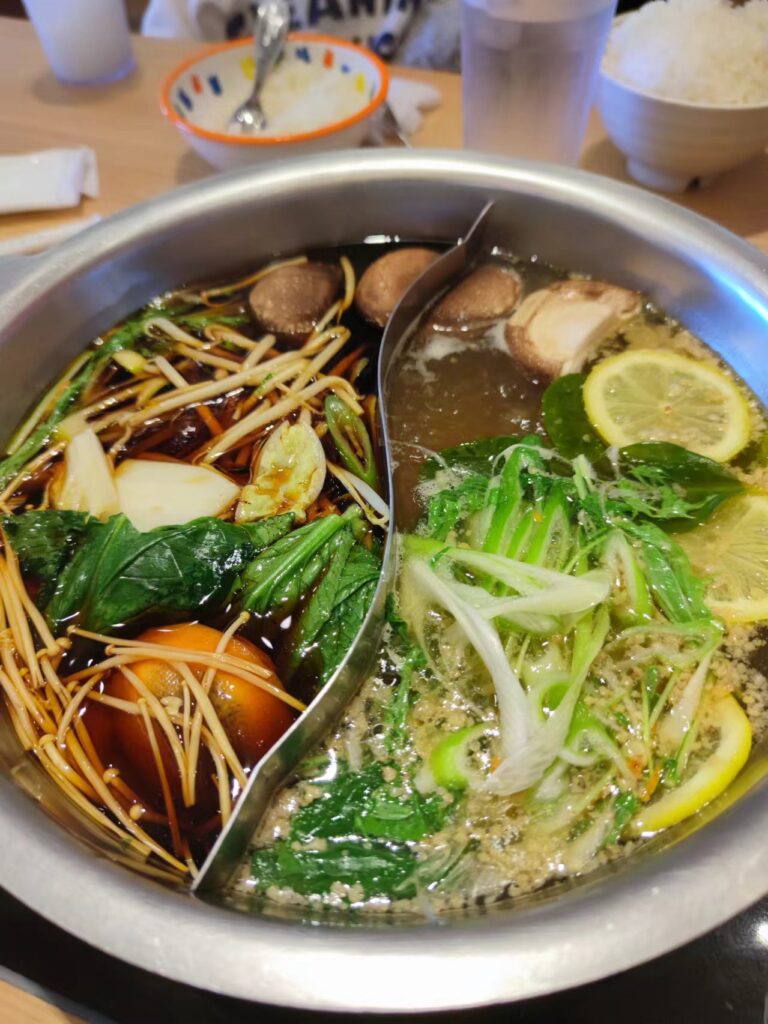

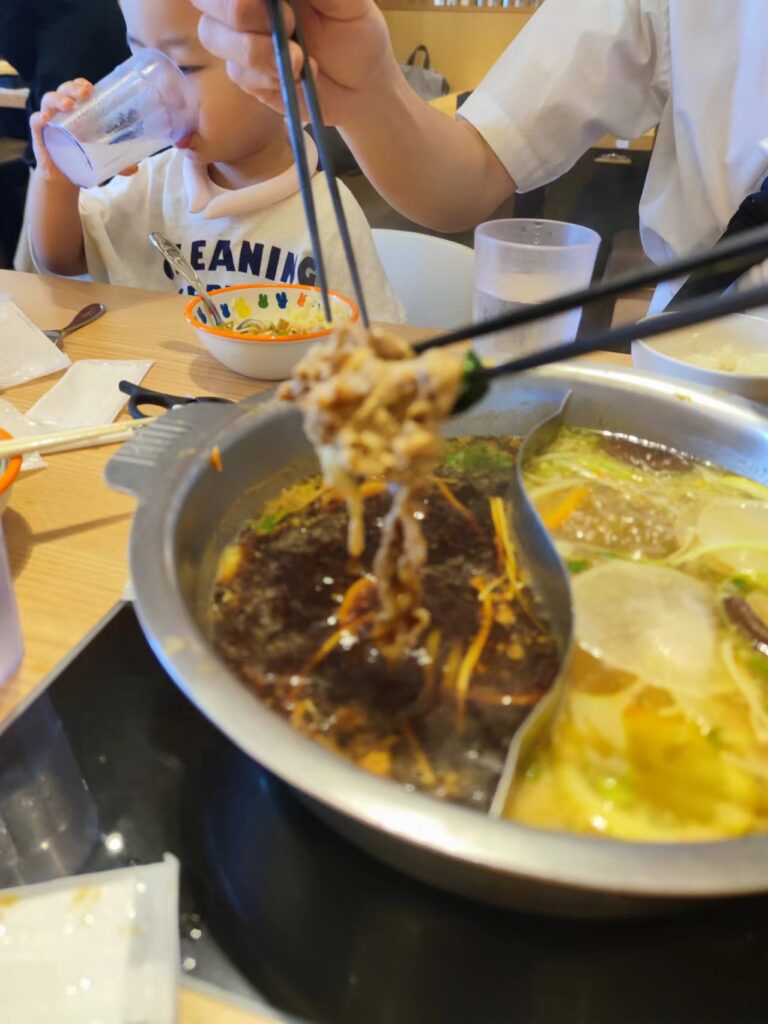
In China, I also tend to cook my meat for longer than the recommended time. My Chinese friends insist that it won’t be as tasty, but I have an uncultured palette and prefer to thoroughly cook my meat.
After cooking the meat in Shabu Shabu, you’re supposed to take it out and dip it in raw egg. My friend assured me that eggs are fresh enough to eat raw here, and when I tried it, I felt like Rocky Balboa. However, I did not go boxing afterward.
The soup flavors in Japan were also different from the ones that we usually get in China. They had a spicy one, but we didn’t order it, so I’m not sure how similar it is to the Chinese spicy hot pot restaurants. We ordered a soy sauce flavored soup and then a seasonal soup with lemon. Both of them were really tasty, but the lemon one was a bit too salty, and when we cooked the vegetables on that side of the pot, they tended to have quite a strong flavor.

In China, some of the most common soup flavors are spicy (numbing pepper or fragrantly spicy), beef, mushroom, or tomato. I really like beef hot pot—I can eat it without crying, and I just love all the beef.
Another important part of the hot pot experience in Japan and China is the sauce. In China, I almost always get the same sauce: cilantro, green onions, garlic, ginger, peanut sauce, soy sauce, and just a bit of vinegar. Sometimes I add a few red peppers or sand vinegar, but I don’t usually stray too much from my usual. Afterall, putting in the wrong thing will mean that the entire bowl of sauce is unpleasant to eat. I’ve done that by accidentally adding numbing pepper or spicy oil. In Japan, the sauce options were fairly similar, but I threw in a few other things as well, and it turned out ok. Fortunately, if you accidentally make a bad sauce, you can just get another one for free, but it’s a bit annoying to ruin a whole bowl of sauce.

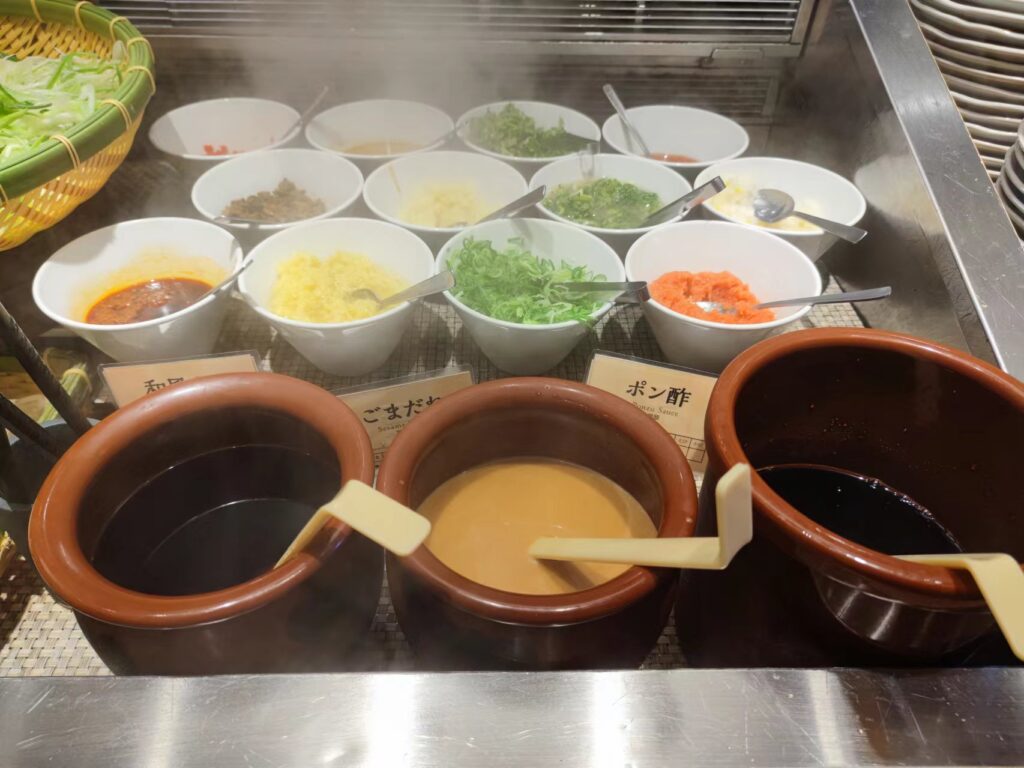
After eating all of our meat, leafy vegetables, carrots, oodong noodles, rice noodles, tofu, and other vegetables that I couldn’t identify, we topped off the meal with ice cream which was also included in the meal package. Since we had been sitting around eating food out of a boiling pot of soup for an hour or so in fairly warm weather, the ice cream was a nice finish.
My Shabu Shabu experience was top-notch, and I would highly recommend it to anyone who is visiting Japan! Or in China, you absolutely must try hot pot with a group of friends.

